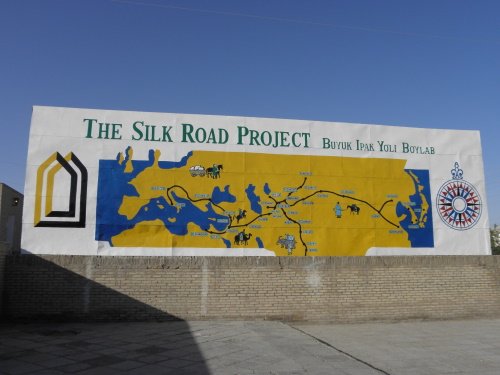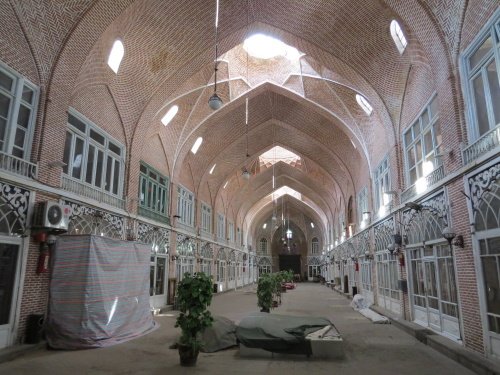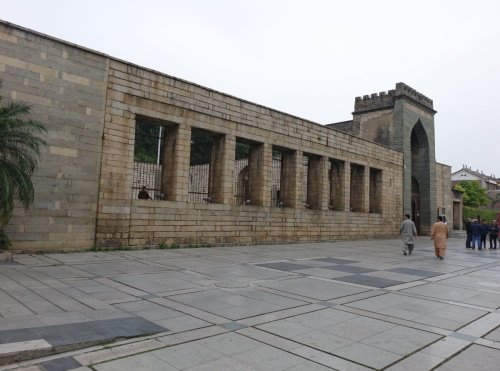In memory of my
recent trip to Kyrgyzstan
, I decided to pimp up our
Silk Road connection
. We gathered no less than 51 connected sites over the years, most of them lacking proper explanations. However, when I tried to apply a structured approach to it I failed miserably. I got lost in the muddy waters of scientific definitions, ancient legends, and modern tourism marketing surrounding the ‘Silk Roads’ brand. So my goal became to make sense of it all, explain more, and judge less. The updated connection contains 69 WHS.

The issues
Finding the ultimate resource for this ‘WHS and Silk Road’ subject was already a quest. I started with the
ICOMOS thematic study
dating from 2014. However, it also struggled with setting boundaries and took a narrow approach to end up near its own goal (find a subdivision of Silk Road Sites for serial nominations). On the other side of the spectrum is the
UNESCO Silk Roads Programme:
a broad initiative where it seems that if you think you belong here, you can join. Of great help was
this older Silk Road topic
at our Forum. I also checked the AB evaluations of the long list of sites that I ended up with.
Attaching the Silk Roads label to a WHS one must consider:
-
The
geographical scope
: most sources will have Chang’an (called Xi’an nowadays) as the starting point in the East. But where did it end/start in the West? Antioch is often named, together with other sites at the Mediterranean coast of the Levant (eg. Tyre, Aleppo). But what about Bursa or Istanbul? In the end, I found
this map
that shows how the whole system interacted. Essentially it was a core corridor plus feeder systems.
-
The
timeframe
: it began around the 1st century BC when the Roman, Parthian, Kushan, and Han empires started to develop long-term connections. Some sources (such as ICOMOS) let it end with the break-up of the Timurid Empire in the early 16th century CE. Others choose the collapse of the Safavid Empire in the 1720s, or the earlier 1453 when the Ottoman Empire closed off trade with the West.
-
The
number and exact track of routes
: even in the narrowest sense geographically and historically, there wasn’t one route. So it’s better to refer to the plural Silk Roads as does the only Silk Roads WHS so far. And to think of it as Corridors instead of roads from A to B.
-
The
function
of a WHS: it’s a ‘route’, so one should look out for roads, bridges, caravanserais. Goods were exchanged, so we need bazaars. And ideas as well, introducing Buddhism and Islam for example.

The variety of Silk Roads
This all leaves us with at least 8 different Silk Roads. There is the Classic Land Route, which covers sites within the narrowest geographical and historical definitions of the Silk Roads, such as the
Mogao Caves
,
Samarkand
, and the bazaars of
Tabriz
and
Aleppo
.
In addition, there are at least the following, "feeder" routes that were connected to the Classic Route:
-
Mongolian: the routes connecting modern-day Mongolia and the steppe. Includes
Xanadu
and
Orkhon Valley
.
-
Caucasus/Black Sea: including sites such as
Derbent
;
-
Turkey/Aegean: the routes through Turkey to the Aegean (
Bursa
and
Istanbul
);
-
North African: the routes from the eastern Mediterranean down to modern-day Egypt and North Africa (I didn't find a WHS for this route, Cairo could be a possibility);
-
Southern: this includes what is known as the Tea Horse Road (southwards from Yunnan (
Lijiang
) and Sichuan, into Myanmar, India, etc), but also a
more western Himalayan loop
across Nepal/India/Bhutan;
-
Eastern:
this route
covers Eastern China plus Japan (
Nara
) and Korea (
Gyeongju
), and includes both land and maritime aspects.
Finally, there is the Maritime Silk Road which seems to be a whole story of its own. It includes for example
Quanzhou
and
Hoi An
but reached as far as
Qalhat
and the
Land of Frankincense
.
Notably missing among the defined routes in the sources is a clear route into Western Europe, it all becomes fuzzy after the goods leave Asian Turkey.

Debatable sites
In the
restructured Silk Roads connection
I have incorporated all WHS that fit into the views explained above. Although I tried to be as inclusive as possible, I dropped a few WHS as well. The
Lonja de la Seda
(Valencia) is at the very western end of the spectrum. With a construction date of around 1500, it is late, and its OUV lies essentially in its gothic architecture.
Sheki
– it fits the region but its foundation was late by any means (1743) and more focused on the
manufacture of silk
. A funny one also is
Regensburg
, which claims without any modesty: “Regensburg was an important transition point on continental trade routes to Italy, Bohemia, Russia, and Byzantium. It also had multiple connections with the transcontinental Silk Roads”.



